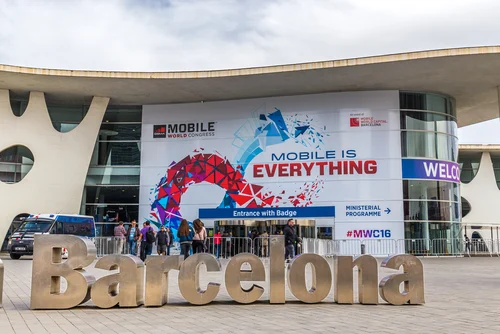In the blue corner, Head of MediaTech Duncan McKean takes flight to media, entertainment and technology show IBC in Amsterdam.
Increasingly, the broadcast and telecoms worlds are colliding and converging. MWC Americas’ location in Hollywood this year gives a nod to this very topic, with GSMA CMO Michael O’Hara telling Mobile World Live that the city is the perfect platform to host an event that “explores the incredible influence of media and entertainment on our industry.”
But the fact that both shows are taking place in distinct, separate locations, at the same time, without any overlap, also sums up exactly where we are in that path to convergence. Or rather, where we’re not.
CCgroup’s experience across the media and telecoms landscape means we’re well aware of how the two industries could be collaborating. However, we are also frustrated by each industry’s siloed approach.
Let’s go to a break
The huge shift in viewers turning to the internet to watch video and TV has been party driven by early movers in the online space such as Netflix. This shift to online video will only continue as these providers increasingly turn their attention to producing their own content rather than acting as simple aggregators, ratcheting up the pressure on traditional broadcasters. Enter too the telcos, which always had a little skin in the game but are now starting to really gear up and do deals that have put them in direct competition with the traditional providers.
The AT&T –Time Warner deal is done, with the operator already announcing plans for a new streaming video service. Telia is well-down down the path of convergence, this year adding to its stockpile with acquisitions of fixed and TV services GET, TDC Norway, and Bonnier Broadcasting.
We’ve all heard it before – telcos are hard up as their traditional revenue streams slow to a trickle, and are increasingly looking to diversify their offerings to maintain their current subscribers, and entice new ones. Converged services could play a key role here.
In our recent MediaTech eBook we spoke to David Bouchier, chief digital entertainment officer at Virgin Media, who remarked “many new entrants to media have recognised that one of the key assets for a telco is its relationship with the customer. Every player needs to play to its strength. We [the telcos] understand customer churn, marketing and billing very well. Whether consumers want a single offer or an aggregated model, we can help facilitate their entertainment choices.”
From their scale, to billing mechanisms and direct relationships with customers, telcos are in a strong position to become powerful content aggregators. Add to that the potential (and I mean potential) to analyse subscriber data to ensure an optimum experience, and personalised content. Recent partnerships point to them extending their capability even further to offer either exclusive and/or original content.
Change the channel
But it’s not all rosy for telcos either. If they want to compete, there are quite a few things they need to brush up on. Broadcasters not only own the content and the relationships to capture it, but they also have the user experience and a large subscriber base of their own.
This is something that BT Sport is well aware of. Rather than focusing on original content, it has focused on technological advances to improve the user experience and improve its service. This led to the launch of a slew of new innovative features such as 4K, Dolby Atmos as well as virtual reality and 360 degree video, putting it in a position to be able to compete with traditional broadcasters. Of course, not every provider has the capital at their disposal to make investments like these, but being able to offer an optimum viewing experience is a must when considering converged services.
But despite the competition heating up, telcos and broadcast providers have a lot more in common than they may think – not least fighting the good fight against OTT providers and the likes of FAANG. Everyone is battling for the viewer, but those providers that are able to aggregate content, integrate billing and provide advanced technologies such as universal search will prevail.
Bridging the gap
The wider issue is that despite increasing evidence of their convergence, both industries continue to operate in their own distinct spheres and siloes. Rather than joining forces to work collaboratively, at times they seem intent on keeping the blinkers firmly on.
True convergence might seem a while away, but there is clear evidence that it’s already started happening. BT has enhanced its own technical capabilities. The TM Forum [client] and IBC have just announced a collaboration on five new proof of concept Catalyst projects that involve players from across the telecoms and media ecosystem.
As the industry shifts en masse to an IP-centric world, broadcasters, OTT providers and telcos are all focused on delivery and differentiation in an increasingly competitive market. If both the media and telecom industries played nicely together, and collaborated not only on the technical side, but also on the business side, it may allow each to play to their own strengths to enhance the overall experience for the people that matter: the viewers.
















